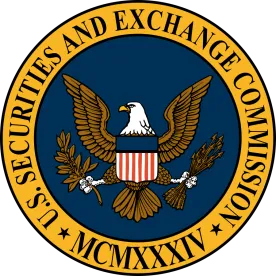On November 23, the Division of Corporation Finance (the Division) of the Securities and Exchange Commission issued CF Disclosure Guidance: Topic No. 10 (the Guidance), providing the Division’s views regarding disclosure considerations for companies based in or with the majority of their operations in the People’s Republic of China (referred to as “China-based” companies).
The Division has identified that, although China-based companies that access the US public capital markets generally have the same disclosure obligations and legal responsibilities as other non-US issuers, there are limitations on the SEC’s ability to promote and enforce high-quality disclosure standards for China-based issuers. As a result, the Division identifies in the Guidance, there is substantially greater risk that the disclosures of China-based issuers will be incomplete or misleading and that investors will have substantially less access to recourse than as relates to other non-US issuers.
The Guidance identifies the following specific risks associated with China-based issuers:
-
Risks Related to High-Quality and Reliable Financial Reporting. The Public Company Accounting Oversight (PCAOB) is restricted in its ability to inspect audit work and practices of PCAOB-registered public accounting firms in China. Congress has proposed legislation that, if passed, could result in the delisting of companies that use auditors that the PCAOB is not able to inspect; however, to date, no such legislation has been passed.
-
Risks Related to Access to Information and Regulatory Oversight. China has often restricted US regulators access to information and their ability to investigate or pursue remedies with respect to China-based issuers.
-
Risks Related to a Company’s Organizational Structure. Because Chinese law may limit or prohibit foreign investment in Chinese companies operating in certain industries, such as telecommunications, many China-based issuers form non-Chinese holding companies that enter into contractual arrangements intended to mimic direct ownership in a structure known as a variable interest entity (VIE). These VIE structures may pose a risk to US investors, because, among other reasons, exerting control through these contractual arrangements may be less effective than direct ownership. Also, the Chinese government could determine that the VIE structure does not comply with Chinese law and subject the issuer to penalties.
-
Risks Related to Regulatory Environment. The Guide notes that China’s legal system is substantially different than the US legal system and may raise risks and uncertainties concerning the intent, effect and enforcement of its laws, rules and regulations.
The Guide addresses differences in shareholder rights and recourse, governance and reporting with China-based issuers. Legal claims, including federal securities law claims, may be difficult or impossible to pursue in US courts against China-based issuers, and investors may be unable to enforce any US court judgements against China-based issuers. In addition, many China-based issuers are organized in jurisdictions outside both the United States and China, such as the Cayman Islands and the British Virgin Islands. There are substantial corporate law and corporate governance differences between these non-US jurisdictions and the United States. Among others, the Guide notes fiduciary duties that directors owe investors may be narrower in scope or less developed. Finally, to the extent that China-based issuers qualify as foreign private issuers, they are exempt from certain reporting requirements under the federal securities laws applicable to US domestic issuers, meaning that they are permitted to provide reduced disclosures in some areas.
The Guidance further addresses specific disclosure considerations for China-based issuers. The Division states that China-based issuers must fully disclose material risks related to their operations in China. Such disclosure should consider the following:
-
Does the China-based company provide clear and prominent disclosure of PCAOB inspection limitations and lack of enforcement mechanisms, as well as the risks relating to the quality of the financial statements?
-
Does the China-based company use VIEs in its organizational structure? If so, does the company include sufficient disclosure about the related party transactions in the VIE structure and caution investors about the risks associated with the VIE structure employed in China?
-
Does the China-based company disclose risks relating to the regulatory environment in China, including risks related to a less developed legal system, which may result in inconsistent and unpredictable interpretation and enforcement of laws and regulations?
-
Does the China-based company provide risk disclosure about differing shareholder rights and remedies in the company’s country of organization and/or based on where a company’s operations are located?
The statements in the Guidance represent the views of the Division. The Guidance is not a rule, regulation or statement of the SEC.
The full text of the Guidance is available here.






 />i
/>i

